Sidewalk cracks, metal grates and cobblestones are the enemies of high-heeled shoes everywhere. Before you have to go running to a repair shop for scuffed and scraped-up shoes, though, just protect them from damage in the first place.
Heel Caps
High heel tips, usually made from rubber or plastic, take the brunt of the wear and tear, and can even fall right off after frequent use. This exposes the heel's metal core, and not only turns the shoe into a clickety-clackety nightmare, but can make the heel itself wear out faster.
Plastic or rubber replacement heel caps, also called heel stoppers, don't just reduce stress on the tips and eliminate the need for repeated repairs; they also keep the tip material from getting scratched up.
Most heel caps cover only the tip itself, but longer versions that extend higher up the heel are available.
Heel Protectors
Temporary plastic heel protectors, which look like a heel cap but with a wide, circular base, help prevent high heels from sinking into grass or sand. Much like a heel cap, they'll protect heel tips from scratches, but unlike other cap replacements, they come right off once you're finished strolling the beach in your sky-highs.
Shrink-Wrap Heel Covers
Although heel caps come in transparent and shoe-matching colors, they may be noticeable on some shoe styles. A thin, clear film that adheres more closely to the shoe can be a more discreet option, although it provides less protection.
Cut the heel cover's plastic tubing to the height you need with a pair of scissors and slide it onto the heel of the shoe. Direct a hair dryer on a medium setting toward the tubing until it shrinks and molds closely to the heel.
Sole Protection
The soles of high-heeled shoes also take a beating on outdoor surfaces, scuffing them up and wearing them out. Have a cobbler add thin rubber soles to high heels to prevent water damage around the edges and keep them looking new.
Adhesive sole pads, cut to fit the shoe, can also provide protection from the street. Nothing will scrape up a pair of killer heels more than a fall on concrete, so the added traction is a bonus.
Shoe Polish
Polish your leather shoes regularly, so when a damaging incident occurs, it's the layer of polish that gets scratched and not the leather itself.
For bare leather, wipe off any dirt with warm water and a soft cloth, let them air dry and then work the polish into the leather with a horsehair brush.
For oiled leather, wipe with a soft cloth dipped in leather cleaner, let the shoes air dry and then work an oil-based leather protector into the material with a new cloth. For patent leather, clean with mild soap and a soft cloth, and then add a patent leather cleaner that contains silicone. For suede or nubuck, treat with a silicone spray.
Well-conditioned shoes also resist water damage, which causes cracks.
Storage
Tossing your heels into the bottom of a closet can scratch them up as much as walking in them can, so store them carefully. Place shoes side by side on the closet floor, hang them on a shoe tree or store them in linen bags or shoeboxes to protect them. Do not store leather shoes in plastic bins, because the humidity will cause them to crack.
Avoid the Outdoors
Outdoor environments are usually what damages high heels, so keep exposure to a minimum. If you do a fair amount of walking to and from work, wear a commuting shoe -- a sturdy boot or sneaker that can stand up to your daily trek -- and then switch to heels once you get indoors.
Related Articles

How to Reinforce Your Shoes

How to Wear Steel Toe Shoes

How to Stretch the Calves on Leather ...
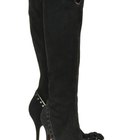
Can You Put Scotch Guard on Suede Boots?

How to Replace Rubber on Heels

How to Keep My Shoes From Sliding While ...

The Differences Between a Flip-Flop and ...

What to Put on Shoes to Prevent ...

Leather Sole vs. Rubber Sole Cowboy ...

What Type of Shoes Should Be Worn for ...
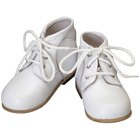
How to Make Rubber Soles Less Slippery

How to Stretch Non-Leather Shoes
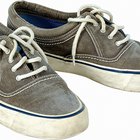
How to Make Sneakers Not Slippery

Running & Corns
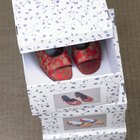
How to Store Winter Boots and Shoes

What to Do If Your Boots Are Too Big

How to Avoid Bending Your Uggs

How to Quickly Break-in New Sneakers

How to Clean TEVA Sandals
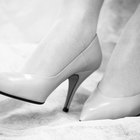
How to Fix the Bottom of the High Heels ...
References
Writer Bio
A writer with a Bachelor of Science in English and secondary education, but also an interest in all things beautiful, Melissa J. Bell has handed out beauty and fashion advice since she could talk -- and for the last six years, write for online publications like Daily Glow and SheBudgets.